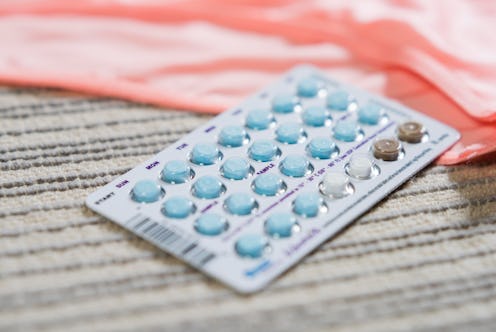Life
Too Many People Lack Full Access To Birth Control

Birth control is as complicated as any other aspect of healthcare. What works for some people can be a total nuisance to others, and contraception isn't the kind of thing you want to play around with. Unfortunately, American legislation doesn't tend to reflect this attitude. Even if you don't know exactly what a contraceptive desert is, you probably know someone with restricted access to birth control — and you might even be one of the millions of people living in a contraceptive desert yourself.
According to research from The National Campaign to Prevent Teen and Unplanned Pregnancy (the National Campaign, for short), more than 20 million women between the ages of 13 and 44 are in need of publicly funded contraception in the United States. However, 19,765,530 women live in so-called contraceptive deserts, meaning they live in an area without "reasonable access" to public health care facilities providing a full range of birth control. These women may have to travel hundreds of miles just to access contraception — especially if they prefer methods like IUDs and implants, which are notoriously difficult to access. Between travelling costs, time off from work, childcare, and other concerns, the cost of birth control can quickly pile up, and for people living in poverty, it may become insurmountable.
The National Campaign illustrated their findings in a map showing the availability of clinics with the full range of birth control. (An interactive version is available on the organization's website.)
Counties without a single publicly funded clinic are shown in colors depicting the area's population of women: Yellow counties are more sparsely populated, while red counties have more women. If a county has a clinic, it's shown in blue. The darkest shade corresponds to "reasonable access" — one clinic per 1,000 women in need — while the lightest blue corresponds to one clinic per 5,000 women.
Overall, there are 10,457,420 women living in counties without a publicly funded clinic offering the entire range of birth control methods. "Over the past few years, we have seen tremendous gains in cost coverage for contraception, which is a huge win. However, coverage does not equal access," said Ginny Ehrlich, CEO of the National Campaign, in a press release.
The situation is less disheartening when the map is expanded to include clinics providing any form of birth control, but often, this means they don't offer the most effective types of contraception. Methods like the pill and condoms are common, but they aren't perfect. IUDs and implants, on the other hand, are widely acknowledged to be incredibly effective as birth control. In 2012, the American Congress of Obstetricians and Gynecologists recommended they become the first line of contraception for women, particularly adolescents.
IUDs are becoming increasingly popular in the United States, and women shouldn't have to go to absurd lengths just to find a clinic offering their preferred form of contraception. Furthermore, Ehrlich noted that a wider range of options for contraception drives down the chance of an accidental pregnancy.
"When women have the full range of access to all contraceptive methods, rates of unplanned pregnancy plummet," she said in the press release. "That is why we need to ensure that all women can easily access the contraceptive method right for them — no matter who they are or where they live." It's also worth noting that multiple studies have shown access to free birth control reduces the rate of abortions as well as unplanned pregnancies.
Given the limited success of the latest attempt to create hormonal contraception for men, it's clear that women deserve better access to birth control. To see if you're a resident of a contraceptive desert, head over to the National Campaign's website for their interactive maps.
Images: Andrew Zaeh for Bustle; courtesy of The National Campaign to Prevent Teen and Unplanned Pregnancy; Giphy